INSIDE ISSUE 19.26 | June 26, 2020
 BIG STORY: Schools can’t find thousands of children in S.C.
BIG STORY: Schools can’t find thousands of children in S.C.
NEWS BRIEFS: Calls to repeal Heritage Act gain ground
COMMENTARY, Brack: McMaster needs to issue statewide mask order now
SPOTLIGHT: AT&T
MY TURN, Rhodes: New bombs headed to old bomb plant?
FEEDBACK: Don’t repeal the Heritage Act
MYSTERY PHOTO: Pretty Lowcountry gazebo
S.C. ENCYCLOPEDIA: Savannah River Site
Schools can’t find thousands of S.C. students

By Lindsay Street, Statehouse correspondent | As many as two in 100 South Carolina public school students have not checked in with their teachers since mid-March, according to preliminary data collected by the S.C. Department of Education and shared with legislators.
“There is a sincere level of concern,” York Republican Rep. Raye Felder said.
Children, especially those in low-income households, could lose out on learning and, with fewer abuse and neglect cases reported since schools shuttered March 15, they could be in bad situations, completely unknown, Felder said.
S.C. Education Oversight Committee Chair Ellen Weaver said this week the number of unaccounted-for children keeps her up at night.
‘A Stephen King novel’

Lexington Republican Sen. Katrina Shealy said more people need to be worried.
“If two kids go missing it’s a ‘Dateline’ story. If 15,225 kids go missing, it’s either a Stephen King novel or the Rapture happened and we got left behind, and somebody has to be worried,” Shealy said, adding that the more likely outcome will be thousands of children left behind academically.
The fears aren’t unfounded. The Charleston County School District initially found 79 students had not contacted their teachers for weeks. Through a concerted, multi-agency effort, 56 were located by May.
“The children we all know who are most vulnerable and need public schools were more likely not to be engaged,” Charleston County schools Superintendent Gerrita Postlewait said in an interview with Statehouse Report. “Many of them were in very traumatic kinds of family circumstances.”
She said those circumstances included neglect, homelessness and becoming the caretaker for an infirmed guardian. Some situations were less alarming, such as high schoolers who took jobs to help their families. The district is still unable to find 23 students, far fewer than the preliminary state average of 167 per school district.

This week, the House and Senate convened briefly to approve $222.7 million in federal money for the S.C. Department of Education and school districts to fund in-person education programs prior to the start of school to help catch up kids who have fallen behind during remote learning, which began March 15 as the state sought to slow the spread of the coronavirus.
“Even if you try to do summer reading camps, math and language arts prior to the start of the academic school year, if we don’t have a way to reach these families, then how do they know?” Felder asked.
Incomplete data shows thousands absent
The legislature tasked the Department of Education to provide the data, and the agency neared completion this week, department spokesman Ryan Brown said. He said it is “the first hard data” on children unheard from in the pandemic and it will be completed after June 29.
The incomplete data of most of the schools has been shared with some education stakeholders, including Felder and Shealy. Felder is a member of the House Education and Public Works Committee, and Shealy is an advocate for endangered children. An early estimate from 800 of the 1,221 public schools suggested as many as 13,500 children were unaccounted for.
According to Shealy, who said she spoke directly with Superintendent Molly Spearman and shared a text message from Spearman containing the information, the number of absentee children is now believed to be closer to 15,225 from 1,200 schools.
“The numbers continue to go down as more students are contacted,” a text to Shealy said.
“I cannot confirm those numbers,” Brown said Thursday in an email to Statehouse Report. In a later email, he said that the earlier estimate of 13,500 students, provided by both Shealy and Felder, “would be your best bet” at accurately portraying the data.
Depending on which estimate is used, some 1.7 percent to 1.9 percent of public school students have not had contact with their teacher since March 15.
The percentage of unaccounted-for children is down sharply from the Department of Education’s original estimate of 4 percent to 5 percent of students, according to Spearman’s comments following an April 1 teacher survey.
Checking in
Some educators said they did not receive state guidance on what happens when they can’t communicate with a student.
“Districts didn’t have a protocol or steps in place to say, ‘OK, if this much time passes and no one has heard from them … then who else do we involve?’” said Dottie Adams, a board member for grassroots teacher organization SC for Ed and Richland County teacher. She said there was uncertainty over whether the school needed to conduct a home visit, involve social workers or the school resource officer, or call the Department of Social Services (DSS).
![]() At the start of the school closure, districts were directed by the Department of Education to mark students as present to avoid triggering repercussions of truancy, according to Postlewait. And Charleston County School District didn’t begin trying to track every child until weeks into remote learning, she said.
At the start of the school closure, districts were directed by the Department of Education to mark students as present to avoid triggering repercussions of truancy, according to Postlewait. And Charleston County School District didn’t begin trying to track every child until weeks into remote learning, she said.
“The guidance from the state was that we would count all students present but clearly each district was responsible for making sure every student was accounted for,” Postlewait said. “Our goal was that every student we see receive a personal phone call or face-to-face (virtually) twice a week just to make sure everything was OK and they were still engaged.”
To do that, the district rolled out a principal-led effort to track engagement in students, which led the district toward discovering 79 students who hadn’t contacted a school employee since schools closed, Postlewait said. She said the unaccounted-for children were mostly from schools that serve a high-poverty population.
Teachers, principals and social workers called all phone numbers listed and knocked on doors to find children they hadn’t heard from, Postlewait said. Later efforts included help from state agencies and law enforcement, she said.
“We are deeply concerned about them and we have done everything our resources let us do,” Postlewait said.
Looking forward
Shealy said she wants more federal money to be directed toward DSS finding the 13,500 to 15,225 students.
“Then, the Department of Education needs to use whatever money they’re getting to help catch these children up,” she said.
The ReOpenSC Senate Select Committee’s June 11 report to the Senate President included a recommendation that the Department of Education seek the assistance of DSS to help locate students.
“DSS is ready and willing to assist at the Department of Education’s direction,” DSS Public Information and Media Relations Director Marilyn Matheus emailed Statehouse Report.
Felder said she wants to see the Department of Education and individual school districts “to come up with creative ways to locate these children.”
“Maybe we need to put together a joint force between our state Education Department and DSS … but we have to have some contact with these families,” she said.
- Have a comment? Send to: feedback@statehousereport.com
Calls to repeal Heritage Act gain ground
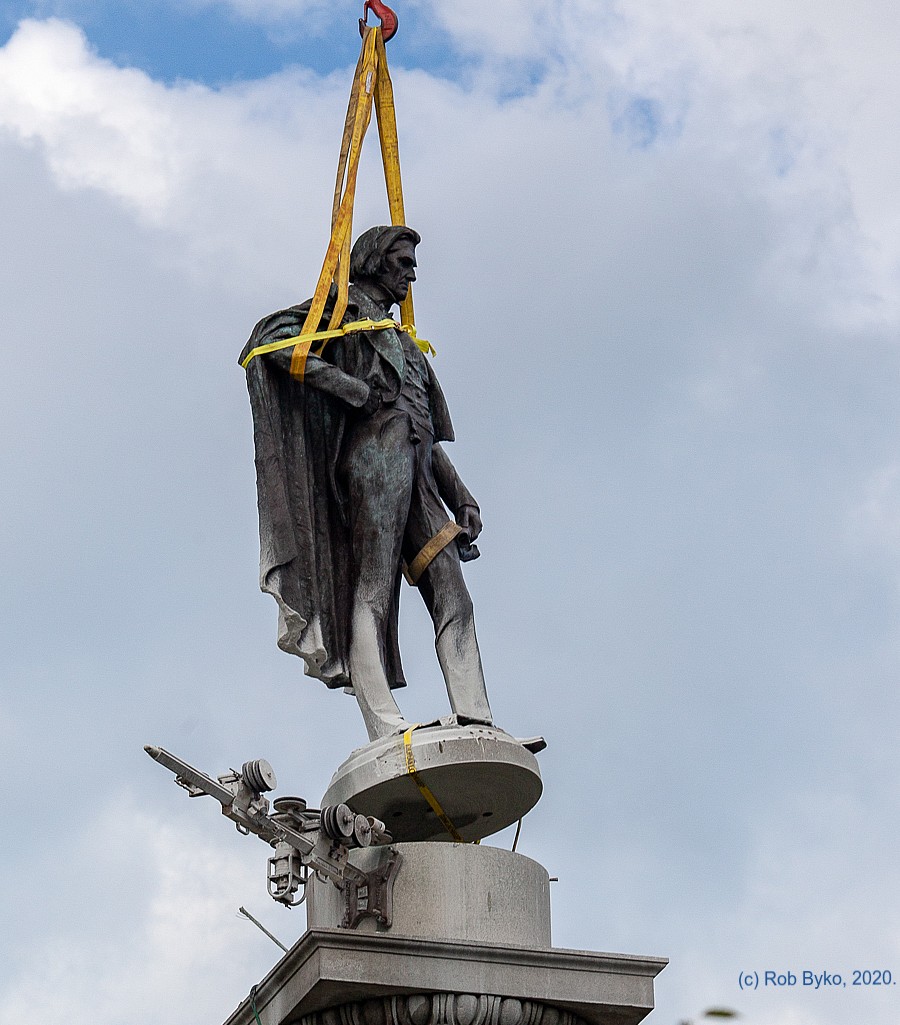
By Lindsay Street, Statehouse correspondent | Close to one-third of state lawmakers say they are for repealing the Heritage Act, according to an organization pushing its repeal.
Repeal the Heritage Act said 49 lawmakers have expressed public support for the law’s repeal. It requires two-thirds of the General Assembly’s two chambers to agree to any changes or removals of war and heritage monuments on public property, including those commemorating the Confederacy and African American heritage.
Lawmakers include 45 members of the S.C. Legislative Black Caucus, Democratic Columbia Reps. Beth Bernstein and Seth Rose, and Republicans Reps. Nathan Ballentine of Chapin and Gary Clary of Clemson.
Last week, Statehouse Report noted four in five current legislators did not have an opportunity to vote on the 2000 legislation. In an opinion piece, editor Andy Brack called for the law’s repeal during this week’s session.
“The curious thing about laws is they can be repealed,” Brack wrote. “Unfortunately, lawmakers sometimes seem to forget they have the power to get rid of a law when it is no longer useful.”
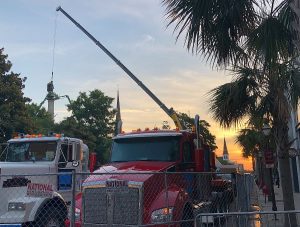
On Tuesday, the city of Charleston voted to remove a statue of John C. Calhoun from a public park. The 115-foot and 124-year-old statue was removed by Wednesday evening. Read about it here. After the vote, S.C. Attorney General Alan Wilson issued an opinion that the statue was not protected by the Heritage Act.
While the legislature did not take any action on repealing the Heritage Act this week during a special session, calls to repeal the Heritage Act continued to grow. As of Wednesday, the Repeal the Heritage Act coalition gathered more than 100,000 signatures since June 6 across petitions started by alumni and students of eight South Carolina colleges and universities, including the University of South Carolina, Clemson University, Winthrop University, the Citadel, and the College of Charleston.
On June 19, USC and Winthrop requested, as required by the Heritage Act, that the state legislature rename buildings on their campuses. Clemson renamed its Calhoun Honors College on June 12.
The Southern Poverty Law Center recognized the Repeal the Heritage Act effort on Tuesday, urging its 420,000 followers to support its petitions.
In other news:
![]() Senate, House pass COVID-19 recovery funds. The Senate approved a spending measure Tuesday that directs $1.2 billion in federal funds toward state and local agencies hit by the pandemic. The House then passed the measure Wednesday. McMaster signed it into law Thursday. Read it here. Spending includes:
Senate, House pass COVID-19 recovery funds. The Senate approved a spending measure Tuesday that directs $1.2 billion in federal funds toward state and local agencies hit by the pandemic. The House then passed the measure Wednesday. McMaster signed it into law Thursday. Read it here. Spending includes:
- $500 million for S.C. Department of Employment and Workforce’s Unemployment Trust Fund;
- $222.7 million for the S.C. Department of Education academic recovery camps;
- $270 million for state and local government expenditures through the S.C. Department of Administration;
- $42 million for statewide testing and monitoring through S.C. Department of Health and Environmental Control Statewide Testing;
- $16.8 million for an emergency stockpile through the S.C. Emergency Management Division;
- $125 million for a Hospital Relief Fund through the Department of Administration;
- $50 million for broadband mapping and planning, infrastructure and mobile hotspots; and,
- $10 million for grant management oversight and compliance through the Department of Administration.
The September session to come. A special September session will be a two-week term with six legislative days, according to legislative staff. During that time, lawmakers are expected to complete a state spending plan. The sine die resolution allows any bill that has passed either chamber to be taken up during that time.
Virus continues to surge. Four-digit daily new infection numbers for South Carolinians battling the coronavirus continued this week. As of Thursday, the S.C. Department of Health and Environmental Control reported 881 patients were in hospital beds across the state. Some counties were beyond 90 percent of their hospital bed capacity. Across the state, bed utilization was at 75.4 percent. Thursday’s report included an additional 1,106 positive cases, bringing the state’s total to 28,962 confirmed infected, and eight additional deaths, bringing the confirmed mortality count to 691.
Lactation support signed into law. The legislature this week ratified and Gov. Henry McMaster signed into law an act requiring employers to provide lactating employees daily break times and to make reasonable efforts to find a private space for expressing breast milk. Read the law here. The breaks are not required to be paid unless the employer already provides compensated breaks and does not require employers to create a permanent or dedicated space for use by pumping employees.
S.C. gets high marks for Energy Freedom Act. The annual Solar in the Southeast report praised South Carolina for passing the Energy Freedom Act in 2019, paving the way for solar expansion in the state. The report also found the state is outpacing solar watts per customer generated than the rest of Southeastern states, and Dominion Energy in South Carolina was listed among “sunrisers” for its four year plan for more solar 807 watts per customer in 2019 to 1,809 watts per customer in 2023. Read the report here.
- Have a comment? Send to: feedback@statehousereport.com
BRACK: McMaster needs to issue statewide mask order now
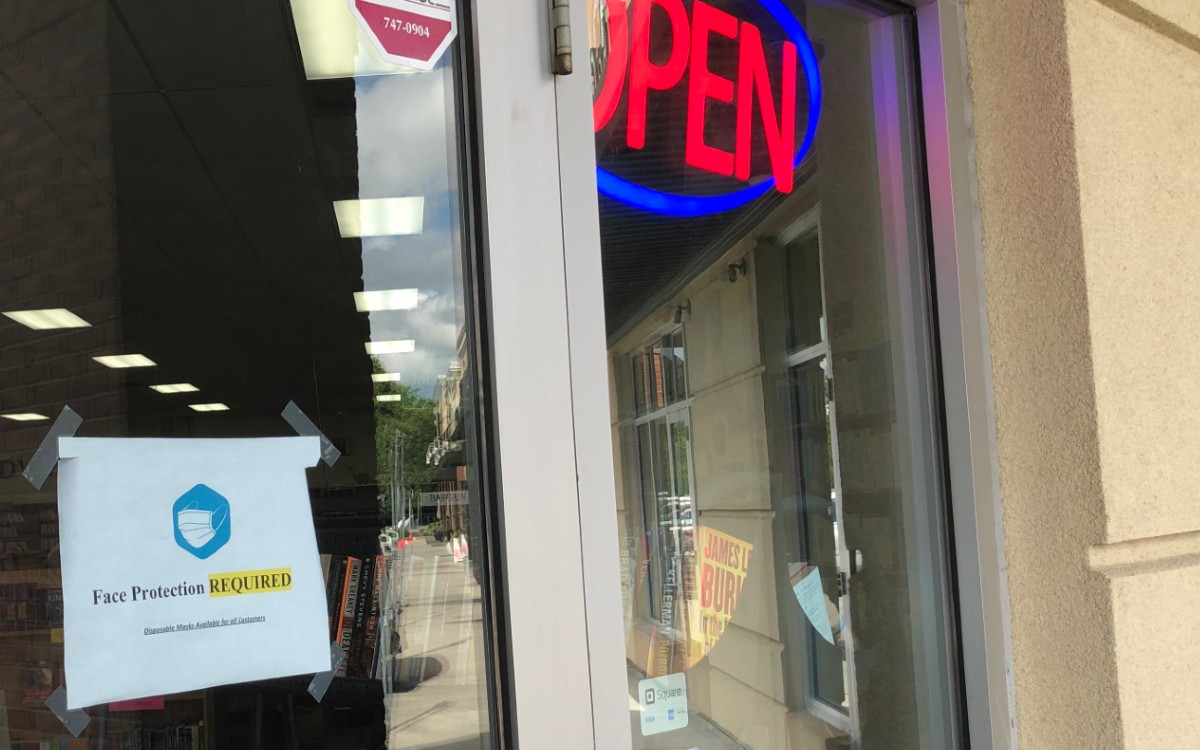
By Andy Brack, editor and publisher | You wouldn’t walk barefoot and bare-chested into a shop, especially if it had a sign on a door that said, “No shoes. No shirt. No service.” To do so would be gross and rude.
So why in the world are people getting all bent out of shape when “No mask” becomes the same kind of societal no-no? At a time when more than 1,000 people in our state are picking up coronavirus every day, not wearing a mask in public is about as smart as walking barefoot on sun-baked pavement on a 100-degree day.
 No one likes wearing masks. They’re not comfortable, just as pants are uncomfortable to some people. But we don’t shop in panties or boxer shorts.
No one likes wearing masks. They’re not comfortable, just as pants are uncomfortable to some people. But we don’t shop in panties or boxer shorts.
Because of the highly infectious nature of the virus through airborne transmission, health officials say wearing masks protects you from getting microscoping droplets that can infect you. But just as importantly, they keep vapor emanating from you from getting to those around you. Not only does wearing a mask protect you, but it protects others. And that’s why it helps curb its spread.
If you’re getting hot and bothered about masks taking away your constitutional rights, wake up. That’s hogwash. A mask is a temporary measure to protect people throughout our communities from contracting the virus and dying — which they are. Almost twice as many people have died in the U.S. since March as did soldiers in Vietnam in years of war.
So suck it up and mask it up, South Carolina, just like mayors and city councils are doing across the state.
“Sometimes emergency circumstances are so overwhelming we must think of ourselves as a collective first and as individuals second,” Columbia Mayor Steve Benjamin wrote in a Thursday email. “And because of the COVID-19 pandemic and its continued accelerated spread through our Midlands communities, there is no doubt or discussion that we are in such overwhelming emergency circumstances.”
Two in five cases reported in the Midlands since March have been reported in the last week, state epidemiologist Linda Bell told Columbia City Council on Tuesday.
Columbia, like Greenville, Charleston and other communities, has passed a local, temporary mask ordinance for when people are in public.
“This decision was not taken lightly by members of our city council or myself,” Benjamin wrote. “As we watched other major municipalities enact their own mandatory mask policies throughout the last few weeks, we have been in touch with our Midlands community to gain a thorough understanding of how they felt on this issue. For myself, the overwhelming response from the public has been in support of requiring everyone to wear masks to reduce the spread of the virus.”
So now it’s time for Gov. Henry McMaster to buck up and mandate statewide mask use in public places for at least four weeks to try to stop community spread of the virus. To do otherwise is the height of irresponsibility and a prescription for more cases, overwhelmed hospitals and death.
State Sen. Mia McLeod, D-Richland, emphatically called for a statewide mask mandate earlier this week.

“Our state is in a public health crisis of epic proportions,” she wrote in an open letter to McMaster. “And your refusal to mandate face masks in public is wrong. Dead wrong. We’ve long since passed our initial projections. In the last 3 months, nearly 26,000 South Carolinians have tested positive for COVID-19 and about 660 people have died because of this deadly virus….
“Now is certainly not the time for partisan politics or pandering to certain demographics. We don’t need divisive rhetoric or leaders who openly mock and deliberately defy their administrations’ own safety guidelines. Our citizens need leadership because slowing the spread of this virus is as much about leadership as it is personal responsibility.”
Yes, governor, now is the time. If we want life to return more quickly to normal, our state needs to stop taking the virus lightly and mask up now. Don’t you think it’s pretty sad that we are actually yearning for the good old days of April when there were about 1,000 cases of coronavirus for the whole month, compared to 1,000 a day now because the virus is spreading?”
- Andy Brack is editor and publisher of Statehouse Report. Have a comment? Send to: feedback@statehousereport.com.
AT&T
 The public spiritedness of our underwriters allows us to bring Statehouse Report to you at no cost. Today’s featured underwriter is AT&T Inc.
The public spiritedness of our underwriters allows us to bring Statehouse Report to you at no cost. Today’s featured underwriter is AT&T Inc.
AT&T Inc. (NYSE:T) helps millions around the globe connect with leading entertainment, mobile, high speed Internet and voice services. We’re the world’s largest provider of pay TV. We have TV customers in the U.S. and 11 Latin American countries. We offer the best global coverage of any U.S. wireless provider*. And we help businesses worldwide serve their customers better with our mobility and highly secure cloud solutions.
- Additional information about AT&T products and services is available at http://about.att.com.
- Follow our news on Twitter at @ATT, on Facebook at http://www.facebook.com/att and YouTube at http://www.youtube.com/att.
* Global coverage claim based on offering discounted voice and data roaming; LTE roaming; voice roaming; and world-capable smartphone and tablets in more countries than any other U.S. based carrier. International service required. Coverage not available in all areas. Coverage may vary per country and be limited/restricted in some countries.
Rhodes: New bombs headed to old bomb plant?
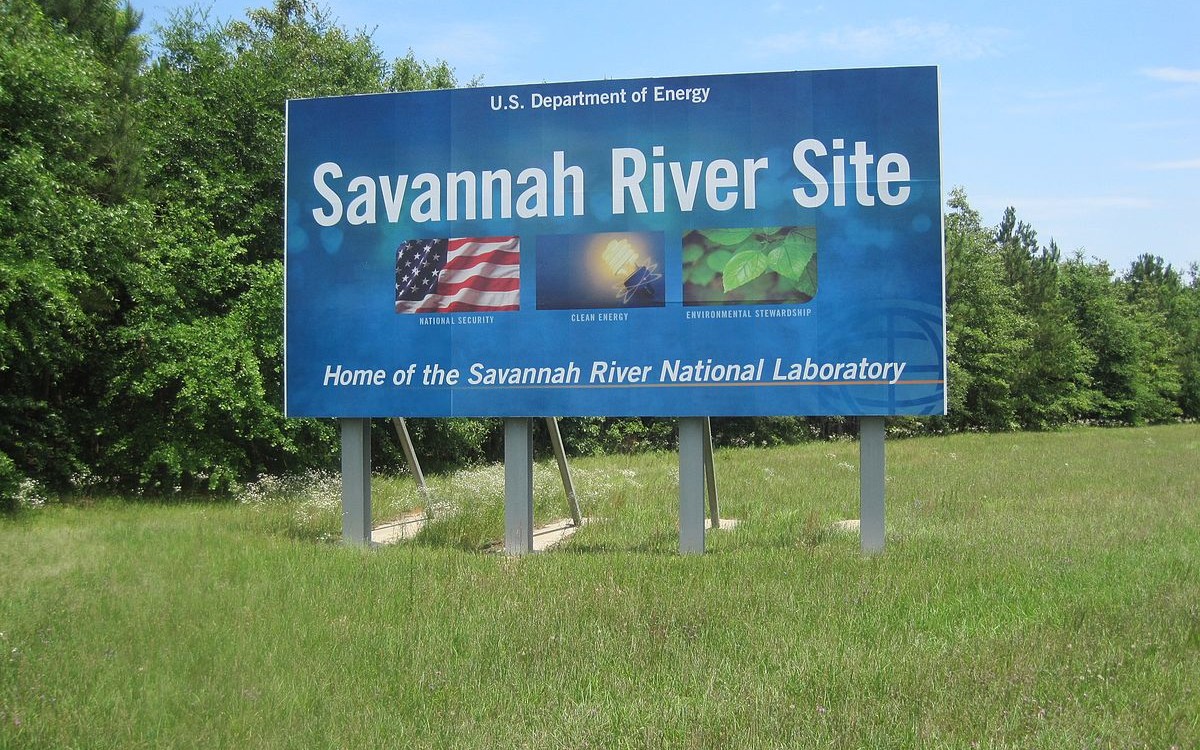
By Suzanne Rhodes, special to Statehouse Report | An arm of the U.S. Department of Energy (DOE) is proposing to build plutonium pits for bombs at its Aiken Savannah River Site (SRS).
The National Nuclear Security Administration (NNSA), whose mission is in part, “to reduce the global danger from weapons of mass destruction” claims an urgent need for both new weapons and delivery systems. To expedite the mission, it proposes using the empty shell of a hastily-constructed and abandoned building to make the cores of the weapons.
![]() A variety of international treaties has managed to limit arms races, especially among signatories. According to most sources, in 2018 the U.S. and Russia each had about 6,600 deployed warheads; the rest of the world had about 1,200.
A variety of international treaties has managed to limit arms races, especially among signatories. According to most sources, in 2018 the U.S. and Russia each had about 6,600 deployed warheads; the rest of the world had about 1,200.
About 10 years ago as the civilian nuclear power industry was floundering, NNSA began to aggressively promote the need to “refresh” weapons. Several budgets attend to weapons — past, present, and future. Recently, the U.S. budget for military spending approximately matched the combined spending of all other nations ($732 billion).
The actual “need” for more plutonium pits, weapons and delivery systems is questionable. The plutonium potency in existing excess cashes is generally recognized to be “effective” for over 100 years – perhaps 150.
The proposal would bring more plutonium to SRS and assumes the abandoned shell is worthy.
To accomplish the new mission, facility design and staff training are necessary. DOE laboratories do not have a record of either safety or efficiency in plutonium pits production.
A comprehensive Programmatic Environmental Impact Study must provide guidance before more serious discussion of this mission. The study should include:
(1) A schedule for SRS cleanup, including the 43 troublesome Olympic-pool-sized tanks of radioactive and chemical wastes from production of Cold War weapons;
(2) A complete analysis of on-site and off-site contamination experienced at DOE sites charged with this mission;
(3) An independent assessment of stockpiles of plutonium stored at all DOE sites and their lifetimes;
(4) A detailed description of volumes, costs, and schedules of safe management and treatment of wastes generated by pits manufacture for indefinite on-site storage at SRS until such time as shipment to a suitable federal repository becomes a possibility;
(5) If disposal at the Waste Isolation Pilot Project is part of the study, how many and which other federal facility wastes will be “bumped” to enable the current planned SRS shipments as well as this proposed new volume of SRS wastes?
(6) The plan for the future of the newly imported plutonium if the $billions of appropriations necessary to produce pits does not receive sufficient and steady funding by Congress;
(7) Given the difficulty of hiring skilled professionals and obtaining specialized materials, as demonstrated during the construction of the MOX similarly hurried “design/build/redesign/rebuild” project and commercial power plants in the region, what is the plan for workforce adequacy over the next 30 years in a stagnant industry? Why should DOE not expect similar resources, fiscal and scheduling problems with this new mission?
(8) The result of new attempts to actively pursue verifiable agreements among nuclear-armed states to curb their nuclear arsenals, as well as ours.
This proposal is a significant new mission for SRS, the U.S., and the world. It deserves thorough investigation and understanding and should not be allowed to proceed behind the veil of “national security.”
Columbia resident Suzanne Rhodes has a master’s degree in public health policy. A longtime member of the League of Women Voters of South Carolina, she serves at the league’s nuclear waste specialist.
Don’t repeal the Heritage Act
To the editor:
![]() As a retired soldier, I respect the hardship of soldiers in the field, no matter what their side. You fight for what you think is right at the time. People with the bravery to put their lives on the line for a cause deserve honor and respect. Especially when fewer that 1 percent of fellow Americans are willing to join the military today.
As a retired soldier, I respect the hardship of soldiers in the field, no matter what their side. You fight for what you think is right at the time. People with the bravery to put their lives on the line for a cause deserve honor and respect. Especially when fewer that 1 percent of fellow Americans are willing to join the military today.
The Heritage Act was and is a compromise to preserve the peace between both sides. I hope S.C. lawmakers vote to keep our historical statues just like the Democratic Party has chosen to keep the donkey as its symbol which was the symbol of Andrew Jackson……a racist slave owner of his day but founder of the Democratic Party! The house of Democrats is definitely built of glass!
— Will Bradley, Las Vegas, Nevada and native of Florence, S.C.
What do you think?
We love hearing from our readers and encourage you to share your opinions. But you’ve got to provide us with contact information so we can verify your letters. Letters to the editor are published weekly. We reserve the right to edit for length and clarity. Comments are limited to 250 words or less. Please include your name and contact information.
- Send your letters or comments to: feedback@statehousereport.com
Pretty Lowcountry gazebo
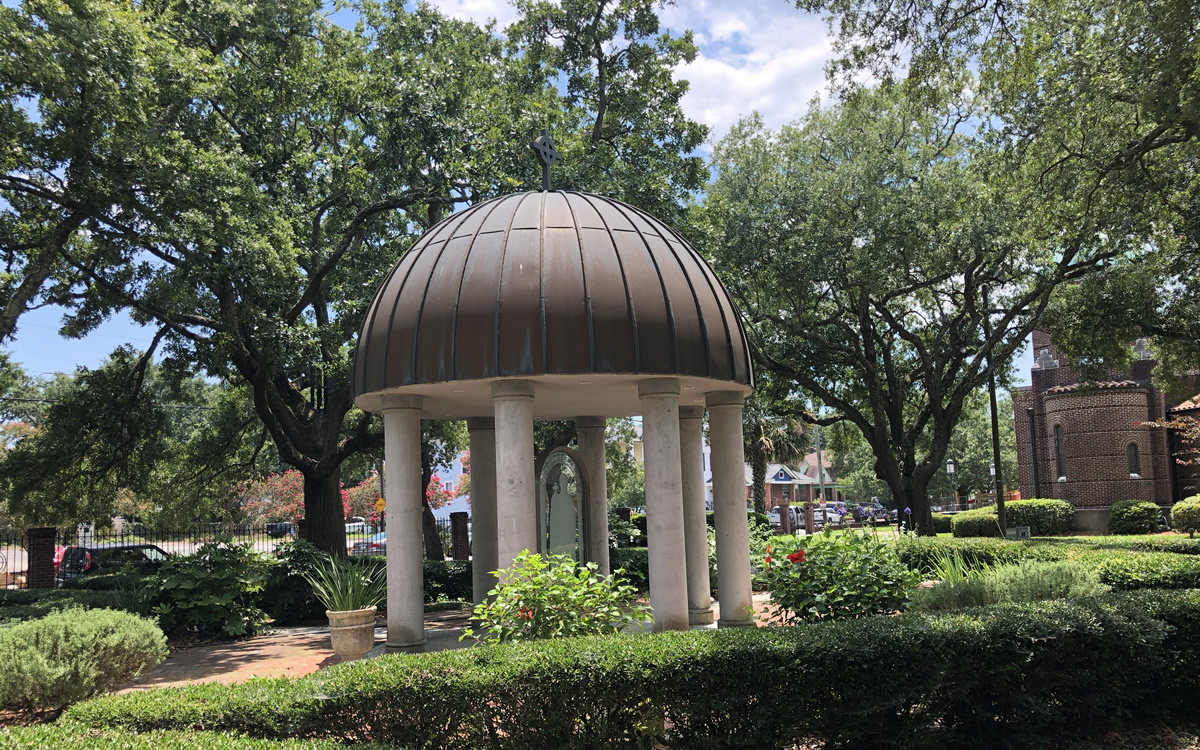
Here’s an interesting, modern gazebo somewhere in the Lowcountry. Tell us where and something about any facet of the photo. Send your best guess of what it is to feedback@statehousereport.com. And don’t forget to include your name and the town in which you live.
Our previous Mystery Photo
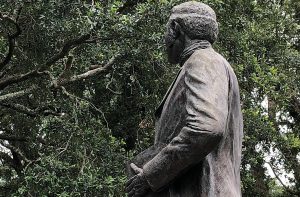 We had several good guesses for our June 19 image, “Imposing statue,” including Robert Smalls and Richard Greener. But the statue displays carpenter and abolitionist Denmark Vesey in Hampton Park in Charleston.
We had several good guesses for our June 19 image, “Imposing statue,” including Robert Smalls and Richard Greener. But the statue displays carpenter and abolitionist Denmark Vesey in Hampton Park in Charleston.
Congratulations to those who correctly identified the statue: David Lupo of Mount Pleasant; Dale Rhodes of Richmond, Va.; Frank Bouknight of Summerville; Lawrence Moore of Folly Beach; Jamie George of Johns Island; Faith Line of Anderson; Jay Altman of Columbia; Allan Peel of San Antonio, Texas; George Graf of Palmyra, Va.; and Charles Davis of Aiken.
Lupo wrote the statue isn’t far from The Citadel: “Denmark Vesey was enslaved until 1799 when he won a lottery and was able to buy his freedom. Later he joined the recently-organized African Methodist Episcopal Church, becoming a class leader. In 1822, he and some other members of the church began plotting a rebellion, but the plot leaked before it could be carried out, and Vesey and a number of others involved were executed. The church where Vesey and the other leaders met was also burned.” [Note: That church was Emanuel AME Church, which is on Calhoun Street.}
Line added, “By 1818, he was preaching to slaves at plantations throughout the region and, drawing on the Bible, he told them that, like the Israelites, they would gain their freedom. Although he would later deny it, he allegedly held meetings at his home to collect arms for an uprising he was planning for as many as 9000 African-Americans in South Carolina. The plan was betrayed by several fearful slaves and he and others were seized. He defended himself ably at his trial, but was sentenced and hanged along with about 35 blacks; some 35 others were sold to West Indian plantation owners. It would have been the largest slave revolt in U.S. history, but its end result was the passing of even stricter laws against African Americans.”
- Send us a mystery: If you have a photo that you believe will stump readers, send it along (but make sure to tell us what it is because it may stump us too!) Send to: feedback@statehousereport.com and mark it as a photo submission. Thanks.
Savannah River Site

The Savannah River Site (SRS) processes and stores nuclear materials in support of national defense efforts. SRS covers 310 square miles that border the Savannah River and encompass parts of Aiken, Barnwell, and Allendale Counties. Owned by the U.S. Department of Energy (DOE), it has been operated since 1989 by Westinghouse Savannah River Company. In 2002 SRS had a budget of nearly $1.3 billion and employed about 13,800 people.
Following World War II, the federal government was interested in establishing sites for the creation of nuclear weapons. SRS was selected from an initial list of over one hundred potential sites in eighteen states as a facility to produce materials for nuclear and thermonuclear weapons. The materials produced at SRS would then be shipped to other locations where the actual weapons were manufactured. The site was chosen in 1950, and the Atomic Energy Commission (AEC) asked E. I. DuPont de Nemours and Company to design, construct, and manage the facility. Construction began on February 1, 1951, and the heavy water plant began operation on August 17, 1952. Construction was fully complete in 1956. Because of security concerns, SRS was protected by U.S. Army anti-aircraft battalions from 1955 to 1959.
![]() The construction of the plant precipitated two major population shifts. First, workers moved to South Carolina to construct and operate the plant. Building the plant required 35,000 workers, who came from across the country. After construction, duPont employees arrived to manage the SRS operations. The nearby town of Aiken became inundated with this influx of new workers. Although the workers overwhelmed public services and drove off some of the visitors who used Aiken as a winter colony, the construction project put about $1 million per day into the area’s economy.
The construction of the plant precipitated two major population shifts. First, workers moved to South Carolina to construct and operate the plant. Building the plant required 35,000 workers, who came from across the country. After construction, duPont employees arrived to manage the SRS operations. The nearby town of Aiken became inundated with this influx of new workers. Although the workers overwhelmed public services and drove off some of the visitors who used Aiken as a winter colony, the construction project put about $1 million per day into the area’s economy.
The second demographic shift affected the six thousand residents of several small communities, including Ellenton and Dunbarton, which were located in the area to be taken over by SRS. For security and safety reasons, these townspeople were required to leave by March 1, 1952, only fifteen months after the AEC’s announcement that the SRS would be built. The government appraised the value of homes, farms, and other real estate of Ellenton and Dunbarton; owners received government payment for their properties but no assistance in finding new homes and relocating. The federal government played no role in designing or creating a government town to serve the needs of residents, as they had with other nuclear projects at Oak Ridge, Tennessee, and Hanford Washington. Hardest hit were renters, who received no compensation at all but still had the cost and inconvenience of the mandatory and permanent evacuation. Many of these displaced residents moved just north of the plant site and formed a new community called New Ellenton.
During the 1950s five reactors were built, and SRS began to produce nuclear materials, primarily tritium and plutonium-239. Radioactive materials were moved from the reactors to one of two chemical separations plants, known as “canyons,” where the highly refined nuclear products of tritium and plutonium were chemically separated from waste by-products. SRS produced about thirty-six metric tons of plutonium (along with its accompanying nuclear waste by-products) from 1953 to 1988, at which time the K, L, and P reactors were shut down. In 1988 DuPont notified the DOE that it would cease operating and managing the site. In 1989 SRS was officially placed on the National Priority List (the Environmental Protection Agency’s [EPA] Superfund List) and became regulated by the EPA.
Through these changes SRS remained a primary DOE site. SRS’s work with tritium was crucial since tritium, with a half-life of 12.5 years, must be replenished constantly in the nation’s nuclear weapons stockpile. SRS also focused on the disposition of legacy materials, a euphemism for radioactive wastes. Spent nuclear fuel primarily from the site’s production reactors was stored at SRS in water-filled concrete basins, awaiting processing. SRS had two processing (separations) canyons, F canyon and H canyon, which stabilized and managed most of the remaining inventory of plutonium-bearing materials at SRS. In 2000 there was a public announcement that SRS would be the site for three new plutonium missions: a mixed oxide fuel fabrication facility, a pit disassembly and conversion facility, and a plutonium immobilization facility. In 2002 F canyon was shut down after completing its last production run to process legacy materials.
Ecologically rich in rare species of flora and fauna, SRS operates an environmental remediation program. Restoration of this ecology is essential as SRS is home to the bald eagle and the red-cockaded woodpecker and is visited by the peregrine falcon and the wood stork, all of which are endangered species. Alligators, wild turkeys, white-tailed deer, otters, and short-nosed sturgeon also find their homes at SRS. As of March 2002, 340 of 500 acres had been remediated. Although more than four billion gallons of groundwater had been treated and about one million pounds of solvents removed, the cleanup process was expected to take decades at a dollar cost that could not be accurately estimated.
— From an entry by Rick D. Boulware. This entry has not been updated since 2016. To read more about this or 2,000 other entries about South Carolina, check out The South Carolina Encyclopedia, published in 2006 by USC Press. (Information used by permission.)
ABOUT STATEHOUSE REPORT
Statehouse Report, founded in 2001 as a weekly legislative forecast that informs readers about what is going to happen in South Carolina politics and policy, is provided to you at no charge every Friday.
Meet our team
- Editor and publisher: Andy Brack, 843.670.3996
- Statehouse correspondent: Lindsay Street
Donate today
We’re proud to offer Statehouse Report for free. For more than a dozen years, we’ve been the go-to place for insightful independent policy and political news and views in the Palmetto State. And we love it as much as you do.
But now, we can use your help. If you’ve been thinking of contributing to Statehouse Report over the years, now would be a great time to contribute as we deal with the crisis. In advance, thank you.
Buy the book
Now you can get a copy of editor and publisher Andy Brack’s We Can Do Better, South Carolina! ($14.99) as a paperback or as a Kindle book ($7.99). . The book of essays offers incisive commentaries by editor and publisher Andy Brack on the American South, the common good, vexing problems for the Palmetto State and interesting South Carolina leaders.
More
- Mailing address: Send inquiries by mail to: 1316 Rutledge Ave., Charleston, SC 29403
- Subscriptions are free: Click to subscribe.
- We hope you’ll keep receiving the great news and information from Statehouse Report, but if you need to unsubscribe, go to the bottom of the weekly email issue and follow the instructions.
- Read our sister publications: Charleston City Paper (every Wednesday) | Charleston Currents (every Monday).
- © 2020, Statehouse Report, a publication of City Paper Publishing, LLC. All rights reserved.


